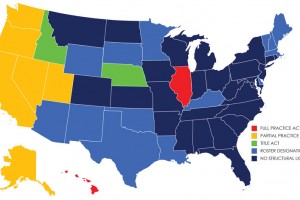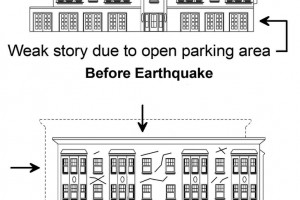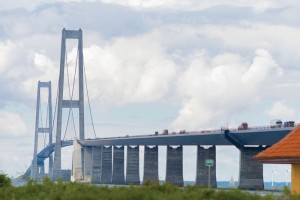There are many Lessons not Learned in spite of experience. Thankfully there are also examples of Lessons Learned through experience that have contributed to meeting technical and ethical responsibilities. As engineers, we should pursue the latter. The most tragic and devastating LESSON NOT LEARNED in our lifetime is the undoing of all of the bitter lessons learned through experience in battling pandemics. Today’s coronavirus pandemic has wreaked havoc, bringing death, economic depression, widespread disease, unemployment, education disruption, and more. …
Review Category : Structural Forum
I am a structural engineer and quite happy with who I am. Call me a simple guy. I grew up in a small town, and I was happy. I went to public schools, played little league baseball, and learned the value of hard work from a dad with a solid work ethic. It was not until much later in life that I learned my family lived well below the government’s established “poverty line.” Nobody told me, so I did not know we were poor. I did not know I was supposed to be miserable. …
“I really like being a structural engineer, but I do not like many of the tasks associated with the design and construction of projects.” This is a comment I have heard many times from structural engineers who express feeling like a “square peg in a round hole” as a design engineer. …
Engineering is a profession based on truth and integrity. Firms and clients rely on an engineer’s expertise, and they trust their engineers to conduct themselves ethically. Unfortunately, we have seen first-hand where lapses in ethical judgment, resulting from project issues, cut short an accomplished career. These lapses usually come from otherwise decent and honest people, and their actions appear inexplicable. In many circumstances, those lapses can be traced to the same cause – conflict avoidance. …
Currently, there is no Structural Engineering (SE) Licensure in New York State. For those of you that are unfamiliar, SE Licensure provides a unique license to distinguish structural engineers from other professional engineers. In general, the intent is to prevent less experienced engineers from designing more critical structures. The arguments for establishing an SE License are readily available on the NCSEA website (https://bit.ly/2AEa3Y2) and the SE Licensure Coalition website (https://bit.ly/2C7Nnjk). …
For the longest time, I avoided following other structural engineering firms on LinkedIn or liking their posts. As the President of the Structural Engineers Association of Colorado, I have seen the positive impact of what engineers can do when they come together. But for some reason, I was still hesitant to celebrate the achievements of my peers publicly. Why? Mostly to avoid a perception by my supervisors and coworkers that I was thinking about leaving my current firm. Sitting at my desk a couple of months ago, on my first day back at work after attending the National Council for Structural Engineers Associations (NCSEA) Summit, I quietly proclaimed, “This stops today!!” No longer will I refrain from following or liking other firms for fear of how it might look. The week I spent in Anaheim, CA, at the Summit was magical and not just because I met Micky and Minnie. Witnessing the community of structural engineers at a national level was truly transformational. …
Technical Considerations for Engineers
Prescriptive Performance-Based Design: An Innovative Approach to Retrofitting Soft/Weak-Story Buildings (STRUCTURE, September 2019) describes the approach contained in the Federal Emergency Management Agency (FEMA) P-807 guideline. P-807 is a method to retrofit a weak first story of wood buildings to mitigate side-sway pancake-type collapse, as depicted in the Figure. The hazard posed by such buildings was underscored by their damage in the 1989 Loma Prieta earthquake affecting the San Francisco Bay area, as well as in the 1994 Northridge earthquake in the Los Angeles region. Some cities in California have enacted ordinances mandating retrofit of soft-story buildings. …
The structural design of buildings and bridges is currently based on the Load and Resistance Factor Design (LRFD) method. The main structural design philosophy is to maintain the factored resistance (the strength of the entire structure and all its elements) above the maximum demand from the worst possible combination of loads on the structure. The ratio of the strength to the demand represents the safety of the structure, where the nominal resistance is reduced by multiplying factors < 1.0, while the loads are increased by multiplying factors >1.0. These multipliers are the safety factors prescribed by the design codes and specifications for both building and bridge structures. For simplicity, all strength-reducing or load-demand-increasing factors are called safety factors in this article. …
Challenges and Opportunities for Structural Engineers
Architecture 2030 (architecture2030.org) reports that, between now and 2060, growth in the world’s population will require a doubling in the amount of building floor-space, equivalent to building an entire New York City every month for 40 years. Much of the carbon footprint of these new buildings will take the form of embodied carbon – the carbon emissions associated with building construction, including extracting, transporting, and manufacturing materials. As a result, owners, designers, engineers, and contractors are turning their attention to building materials and seeking information on these products so they can make more environmentally informed and smarter choices. …
Developers, owners, general contractors, and subcontractors all face a similar dilemma. How can fantastic projects be created when they cost so much? Competition for land, difficult entitlements, and rising construction costs remain ongoing challenges facing the mandate to build, particularly housing. Material and equipment scarcities, code and regulation intensifications, and the lack of available skilled labor all contribute to decreased productivity. Inadequate housing and transportation create shortages of local labor while insatiable demand continues to outpace supply, all leading to soaring construction costs. …








